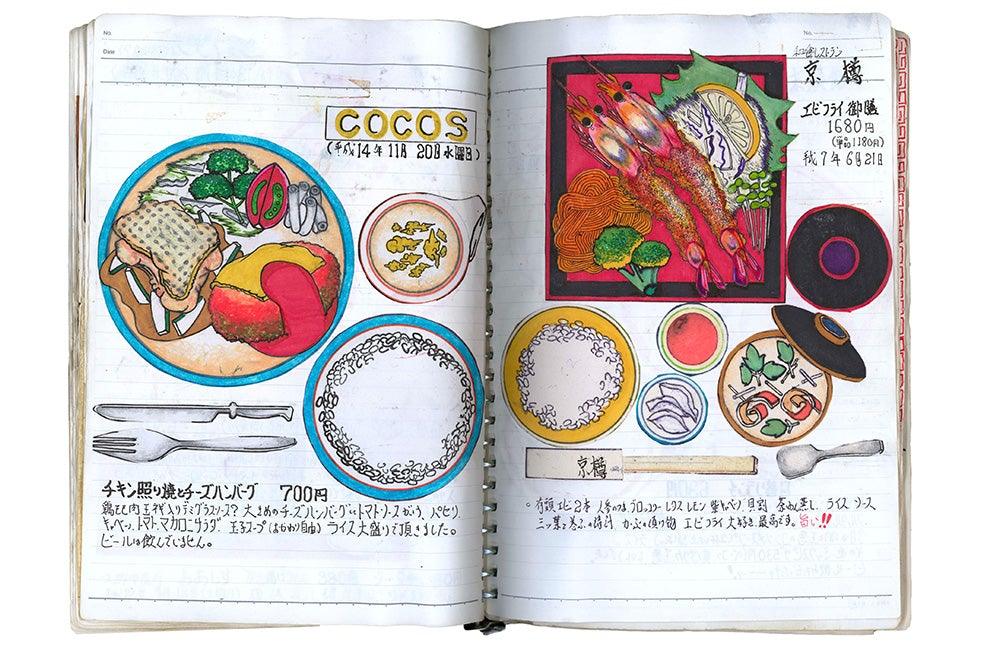First published: Winter 2018
A decade after presenting a groundbreaking show of innovative Japanese works, Switzerland’s Collection de l’Art Brut revisits a country whose self-taught “auteurs” have earned international renown
In 2008, the Collection de l’Art Brut presented Japon, an exhibition of drawings, ceramics, performance-art costumes, and objects made by such Japanese autodidacts as Takashi Shuji, Shinichi Sawada, Eijiro Miyama and Takanori Herai. (In fact, the Swiss museum’s involvement with art made by Japanese “auteurs” – literally, “authors”, using a French term it employs to refer to art-makers – began with an earlier exhibition, Art Incognito, in 1997. At that time, in Japan, the French term “art brut”, later adapted phonetically into Japanese as “aato buryutto” アール・ブリュット, had not yet become common, hence the title of that earlier show.

Untitled, Itsuo Kobayashi, 1982/89, ink on paper, 11 x 17.32 in. / 28 x 44 cm, Galerie du Marché, Lausanne
Japon turned out to be an influential exhibition, prompting other European institutions to also present what came to be known both within Japan and overseas as “Japanese art brut”. Halle Saint Pierre in Paris; the Museum im Lagerhaus in St. Gallen, Switzerland; the Outsider Art Museum in Amsterdam; the Wellcome Collection in London; and the 2013 Venice Biennale all went on to show such art. It also turned up at art fairs and in galleries in Europe and the United States.
In all of those instances, given certain language and cultural barriers, presenters outside Japan of "Japanese art brut" had to work with Japan-based intermediaries in order to learn about who was producing this kind of art and seek opportunities to show it. Often, they collaborated with what are known as “social-welfare organisations” in Japan, which house art-therapy workshops in which disabled persons take part. Some such institutions have embraced the art brut label to identify and promote some of their participants’ creations. For better or worse, especially within Japan, art brut has come to be associated almost exclusively with artworks produced by disabled persons. Meanwhile, outside the country, “Japanese art brut” has tended to group – and obscure – the individual creative voices of its makers under a broad art-brand label.
Given my Japan-related background, Sarah Lombardi, the director of the Collection de l’Art Brut, invited me to undertake fresh research about Japan’s art brut creators and to assemble a new exhibition of their works for the Swiss museum. Its goals: to showcase more vividly the individual artistic visions of such “auteurs” and to call attention to genuine art brut makers in Japan, whether they are associated with facilities for the disabled or completely independent of them. This time, too, the CAB sought to develop all-new, direct relationships with self-taught artists, institutions, galleries, and collectors. Lombardi notes, “This project expands our research about Japan at a time when its discovery of art brut is in full swing and even as, in Japan, the concept of this kind of art is still relatively new.”
During several research trips to Japan, I met and studied the creations of a wide variety of self-taught artists around the country. I shared my findings and critical analyses with Lombardi and my curatorial colleagues at the CAB. We decided to call the museum’s new exhibition Art brut du Japon, un autre regard (Art Brut from Japan, Another Look), a title suggesting that we would look not only at more recent artistic productions from Japan but also propose to examine them in a new way.
This is an article extract; read the full article in Raw Vision #100




